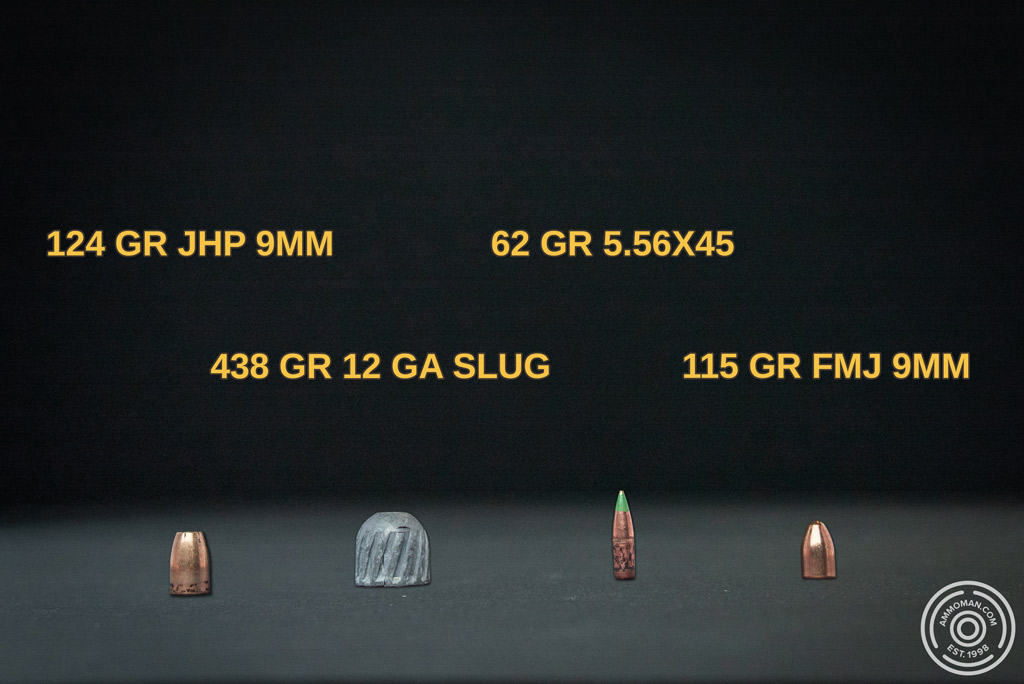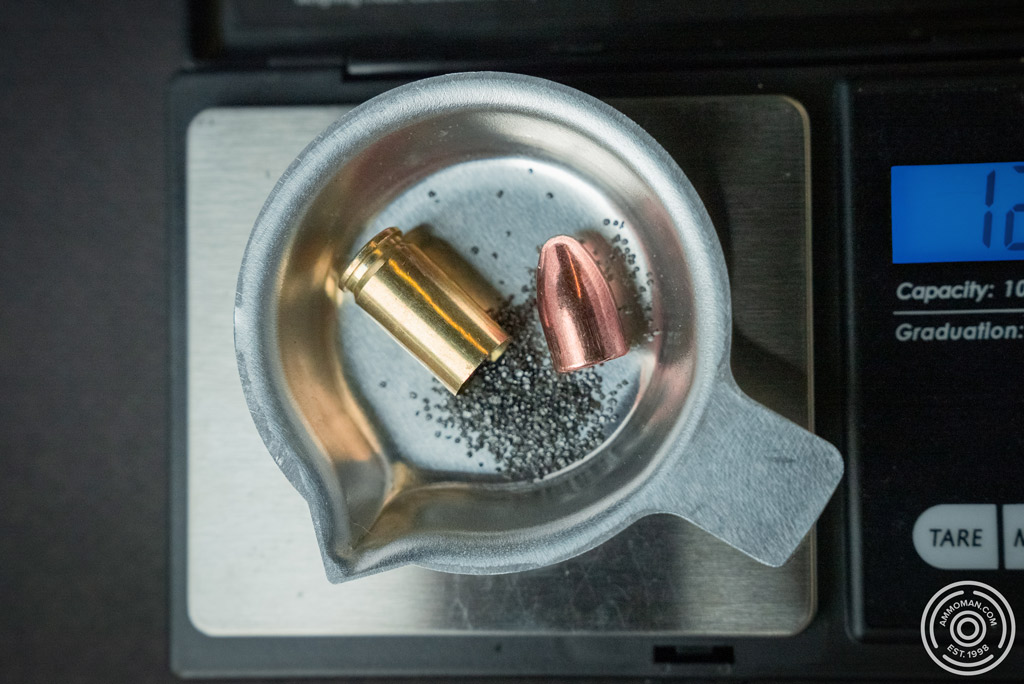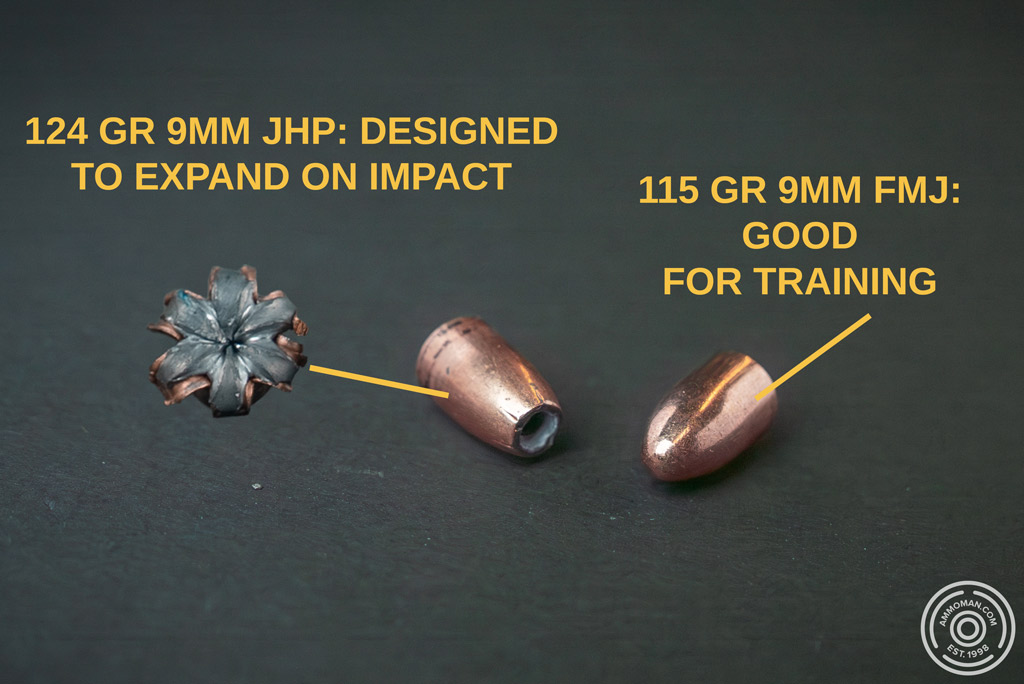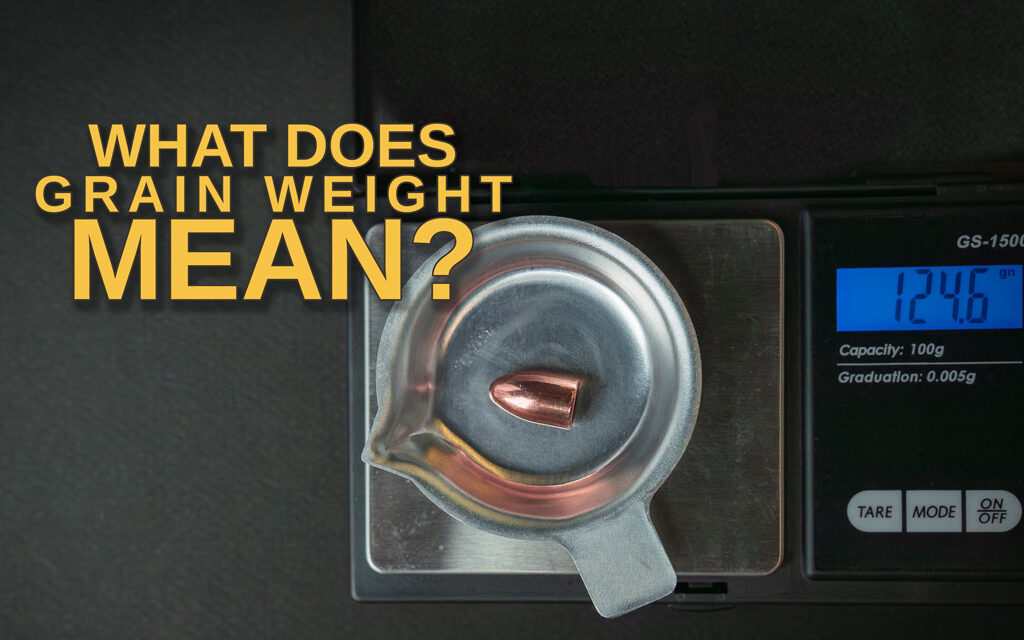Whether you are new to gun ownership or you have a lifetime of experience, you may not fully understand “bullet grain”. Maybe you’ve heard the term “grain” or seen “gr” (as in “115-gr FMJ”) listed on boxes of ammunition, but do you understand what it means?
If not, we are here to help! And even if you know what it means, a quick refresher never hurts.
Depending on who you talk to, grain weight is either extremely overrated, or one of the most under-appreciated aspects of shooting. Impacting internal, external, and terminal performance, grain count should never be disregarded completely.

Each caliber can have a multitude of grain weights to select from.
Let’s explore what “grain” means, how it impacts your shooting, and whether you should look for more or fewer grains from your next box of ammo…
Bullet 101: A Grain of Knowledge
What is Grain Weight?
“Grain” is the standard measurement of weight for bullets in the U.S. and many other countries. People (in the U.S. at least) are weighed in pounds. Bullets are weighed in grains. It’s that simple.
A single grain is equal to one 7,000th of a pound. Roughly speaking, it’s about 0.000143 pounds. Another way of saying the same thing is that there are 7,000 grains in a pound.
Here are a few useful conversions:
• 1 pound = 7,000 grains
• 1 ounce = 437.5 grains
• 1 grain = 0.000143 pounds
• 1 grain = 0.0023 ounces
As a hobby shooter, hunter, or conceal-carry user, you don’t have to memorize the numbers or know all the conversions. Just know that a grain is an extremely small measurement but, at bullet speed (which is extremely broad), the slight differences in weight can significantly impact performance from the chamber to the target.
Resources:
Ounces to Grains Tool
How Many Grains Are in an Ounce?
Important Note: Grain Weight is Bullets Only
We must emphasize that grain weight, as listed on a box of ammo or in a product description, is for the bullet only. It does not suggest the weight of the whole cartridge, merely the weight of the bullet that will fly from the muzzle.
Grain Specs: Bullet or Powder?
To make things a bit more confusing, grain can also refer to the amount of propellant in the cartridge. Some cartridge names derive from the original powder load, which was measured in grains. However, from the average shooter’s perspective, grain means bullet weights.

Grain weight: powder vs. bullet weight.
In almost all situations (and for the purpose of this article) grain exclusively means bullet weight.
Why are the “Grains” so Important?
Bullet weight is important because it affects a multitude of things:
- How the cartridge performs in a firearm.
- How the bullet flies from the muzzle to the target.
- How the bullet acts once it hits the target.
While certain cartridges have typical speeds, trajectories, and energy, when you adjust the bullet weight the performance will change slightly. For example, a .223 Remington with a 55-grain bullet (the standard size) is generally considered a fast, accurate cartridge with moderate power and range. But when if you increase or decrease the weight of the bullet, it can become faster, more powerful, or more accurate at a distance; all depending on whether you go heavier or lighter.
To better understand how grain impacts performance, let’s look at the general benefits of shooting lighter or heavier bullets…
General Characteristics and Behavior of Lighter Bullets
The main advantage a shooter gains from a lighter bullet is speed. Essentially, you have the same internal pressure or force behind the bullet, but it pushes a lighter object down the barrel. This means that a lighter bullet, assuming everything else is the same, will generally fly faster than a heavier bullet.
With more speed you gain a flatter trajectory. The bullet, because it is flying faster, will resist the pull of gravity and have less drop at 100, 200, 300 yards, and beyond.

A 55 grain 5.56×45 bullet has a very flat trajectory from it’s higher velocity.
However, crosswinds can have a greater impact on lighter bullets. They are more prone to being blown off course, which has an obvious impact on accuracy.
A lighter bullet will also have less recoil. Heavier bullets create more energy (which we discuss below) but a lighter bullet tends to be easier on the shoulder.
General Characteristics and Behavior of Heavier Bullets
The primary advantage of a heavier bullet is more energy. A heavier object, as long as the speed does not drop too much, will hit with more energy. This is why heavier bullets are often preferred for self-defense handguns and hunting rounds but not target shooting.

Pick the grain weight according to the specific task you have.
With more energy, you can have greater penetration, although this depends largely on bullet design. It also affects how the bullet expands and sends energy into the target, through the theory of hydrostatic shock.
Heavier bullets are more likely to drop the target or stop a threat, so they are typically used in self-defense and hunting rounds. For example, the standard or typical load for a 9mm Luger is 115 grains yet many self-defense and duty loads range from about 124 grains to 150 grains.
Grain Difference Examples: Same Brand, Different Weights
Each cartridge is different; minor adjustments in weight will have different effects on, say, the .308 Winchester versus the .223 Remington versus the 9mm Luger.
To highlight some of the differences, let’s look at the stats from a few pairs of ammunition. Let’s see how two products, from the same cartridge and product family, perform with different weights.
.308 Winchester, Fusion Rifle (Federal)
| Muzzle Velocity (fps) | 200-yard Velocity (fps) | Muzzle Energy (ft-lbs) | 200-yard Energy (ft-lbs) | |
|---|---|---|---|---|
| 150 grains | 2,820 | 2,391 | 2,648 | 1,903 |
| 180 grains | 2,600 | 2,260 | 2,702 | 2,042 |
This comparison shows fairly typical results that align with conventional wisdom about ammunition. The lighter bullet is faster, over 200 fps faster than the heavier round, while the heavier round is more powerful. But the heavier round is not significantly more powerful; the difference in muzzle energy is about 50 ft-lbs, hardly a massive gap. Where the heavier round becomes more effective is downrange, at 200, 300, and 400 yards; this is where the heavier bullet maintains its energy and gives a tangible advantage.
9mm Luger, Golden Saber Defense (Remington)
| Muzzle Velocity (fps) | 200-yard Velocity (fps) | Muzzle Energy (ft-lbs) | 200-yard Energy (ft-lbs) | |
|---|---|---|---|---|
| 124 Grains | 1,125 | 1,074 | 348 | 317 |
| 147 Grains | 990 | 964 | 320 | 304 |
This comparison largely bucks conventional wisdom. While the speeds hold up, the muzzle energy is actually higher in the lighter round. Possibly (and this is just a theory) the heavier bullet is slowed so much that it loses significant energy.
Let’s look at one more. We’ll go off script a bit with this one by comparing cartridges from the same manufacturer, from different brands, but with vastly different sizes. In this case, one is lighter than the standard (55 grain for a .223 Remington) while the other is heavier…
| Muzzle Velocity (fps) | 200-yard Velocity (fps) | Muzzle Energy (ft-lbs) | 200-yard Energy (ft-lbs) | |
|---|---|---|---|---|
| 38 Grain (Varmint-X) | 3,800 | 2,509 | 1,218 | 531 |
| 64 Grain (Super-X) | 3,020 | 2,293 | 1,296 | 747 |
This comparison really shows the difference between lighter and heavier bullets. The lighter round is faster but less powerful, while the heavier round is more powerful but has less speed. The data from these rounds also shows that the lighter bullet has a straighter trajectory, which aligns with the common assumptions about muzzle weight.
Bullet weight is an important issue for all shooters, especially hunters and self-defense-minded individuals. By understanding grains and how weight impacts performance, you can select better rounds for your specific needs.






